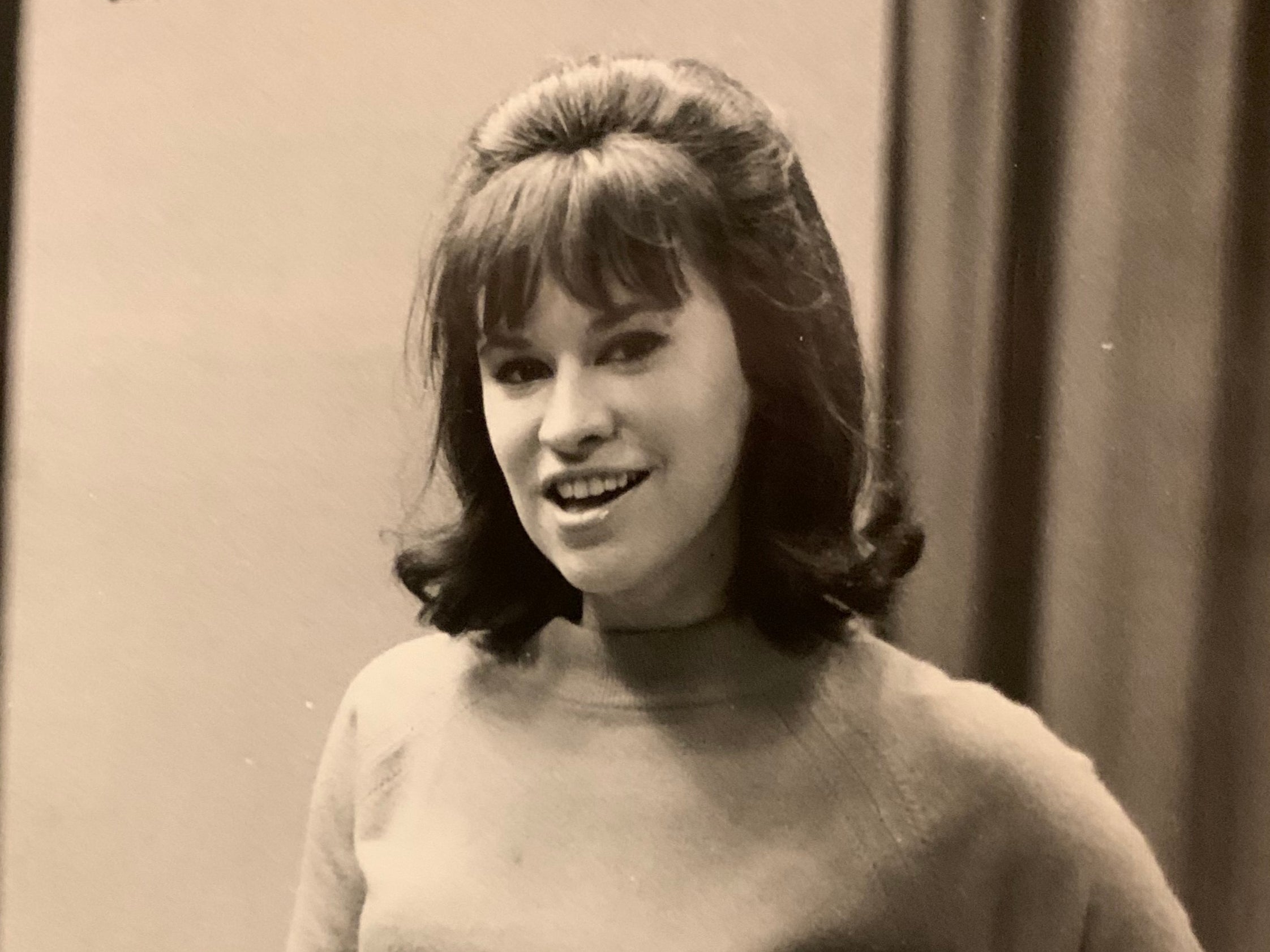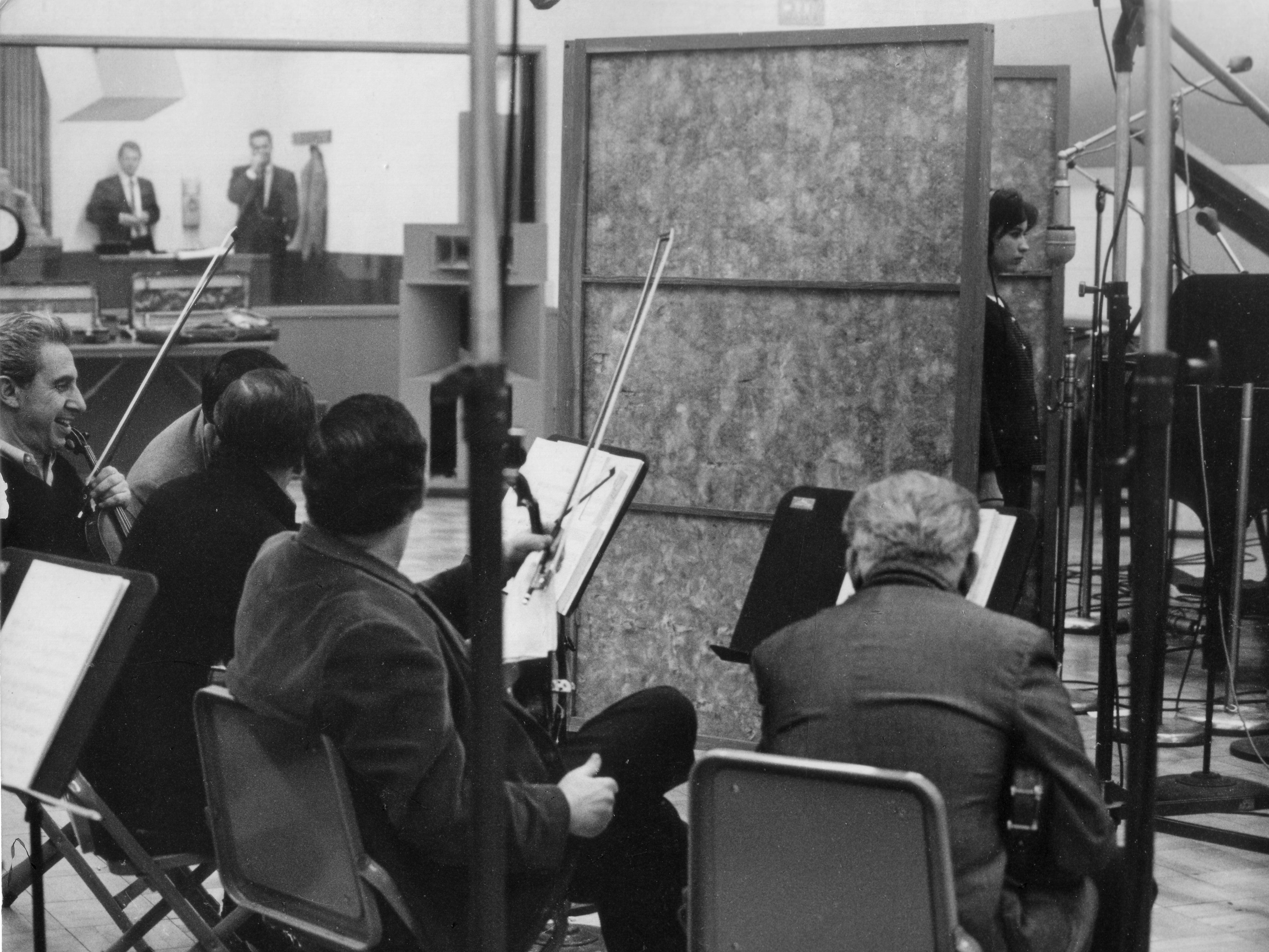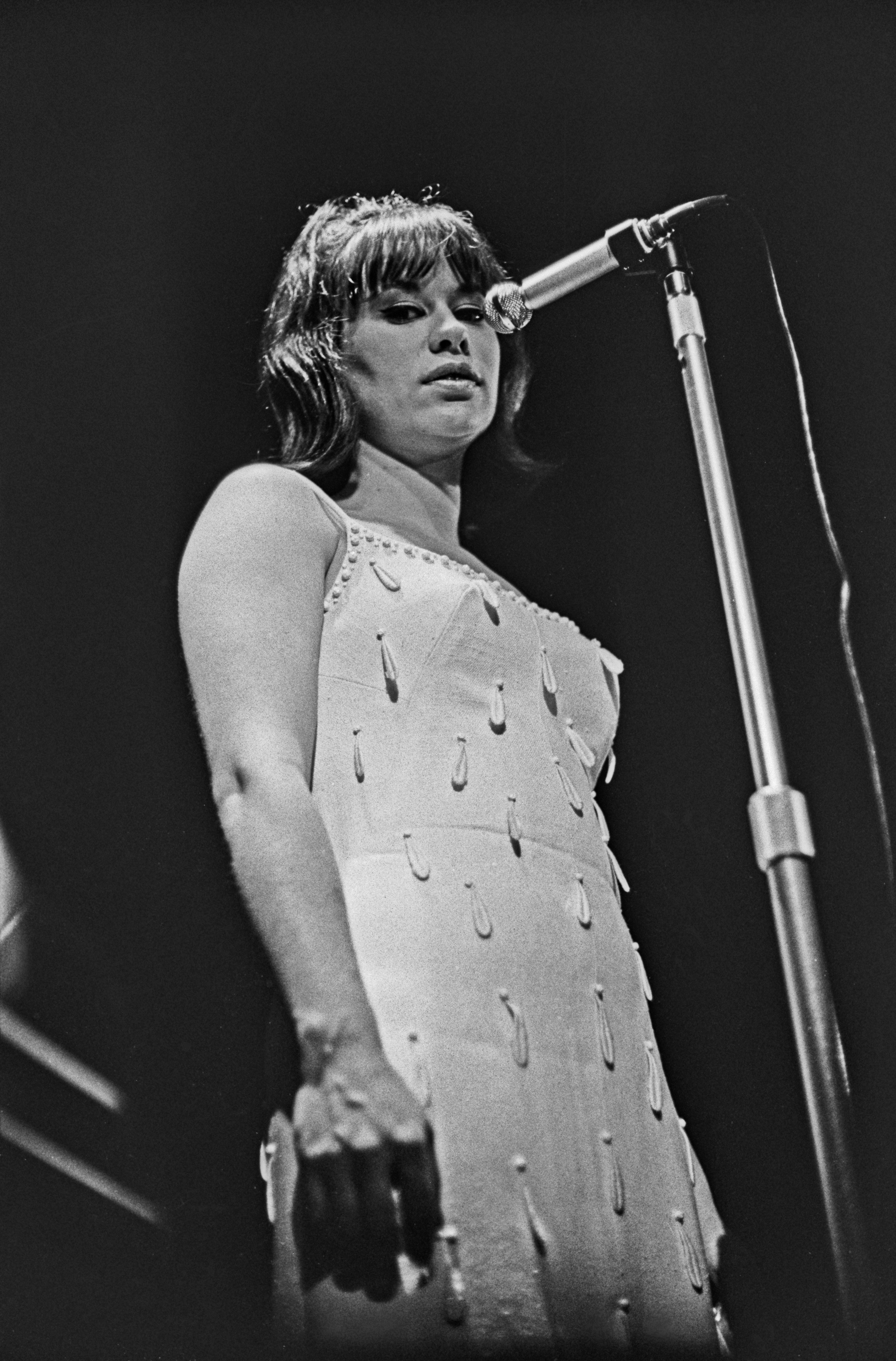‘He made sure that she got nothing’: The sad story of Astrud Gilberto, the face of bossa nova
Without the 22-year-old’s voice, ‘The Girl From Ipanema’ would not have become the phenomenon it did – but mistreatment, misogyny and lack of compensation wore her down, writes Martin Chilton


The Girl from Ipanema” was one of the seminal songs of the 1960s. It sold more than five million copies worldwide, popularised bossa nova music around the world and made a superstar of the Brazilian singer Astrud Gilberto, who was only 22 when she recorded the track on 18 March 1963.
Yet what should be an uplifting story – celebrating a singer making an extraordinary mark in her first professional engagement – became a sorry tale of how a shy young woman was exploited, manipulated and left broken by a male-dominated music industry full, as she put it, of “wolves posing as sheep”.
Gilberto, who was born Astrud Evangelina Weinert in Salvador, Bahia, on 29 March 1940, appeared on her debut record completely by chance. She was at the A&R Studios in Manhattan to accompany her husband João Gilberto, the celebrated guitarist who helped create bossa nova. He was recording the Verve Records album Getz/Gilberto, alongside the renowned jazz saxophonist Stan Getz and pianist Antonio Carlos Jobim.
The song “Garota de Ipanema” (“The Girl from Ipanema”) was composed in 1962 by Jobim and Vinícius de Moraes, two middle-aged men revelling in their desire for Heloísa Pinheiro, the teenager who used to pass by Veloso, a bar where they drank near Ipanema beach. The Portuguese lyrics, later translated into English by Norman Gimbel, included the memorable opening lines:
“Tall and tanned and young and lovely,
The girl from Ipanema goes walking.
And when she passes, each one she passes goes, ‘ahhh’.”
Gimbel – who went on to write the lyrics for hit “Killing Me Softly with His Song” and to compose the theme tune for the hit television show Happy Days – was present when it was first mooted that his English words be used along with the Portuguese sung by João Gilberto. The acclaimed A&R engineer Phil Ramone was overseeing recording in New York and remembered clearly that it was Astrud Gilberto who offered to sing a duet. “Astrud was in the control room when Norm came in with the English lyrics,” Ramone told JazzWax in 2010. “Producer Creed Taylor said he wanted to get the song done right away and looked around the room. Astrud volunteered, saying she could sing in English. Creed said, ‘Great.’ Astrud wasn’t a professional singer, but she was the only victim sitting there that night.”
Astrud Gilberto wasn’t a complete novice. She grew up steeped in music (her mother Evangelina Neves Lobo Weinert played multiple instruments) and sang regularly with her husband in Brazil, including in a concert at the Faculdade de Arquitetura, part of one of Rio de Janeiro’s top universities. She later admitted she had been “nervous” as she looked at the lyric sheet for “The Girl from Ipanema”, because “this was my professional work”. She concluded it was “a bit of fate” – and her beguiling, whispery voice made all the difference to the song’s appeal, earning a Grammy for song of the year and a nomination for Best Vocal Performance by a female.
As soon as the musicians heard the playback, they knew they had something special on their hands. They were so pleased with Gilberto’s contribution that they asked her to sing on another Jobim track, “Corcovado” (“Quiet Nights of Quiet Stars”).
Almost immediately, Taylor and Getz, both more than a decade older than Gilberto, began claiming that it had been their idea to ask the youngster to sing on the record. Taylor, who signed John Coltrane for Impulse! Records, said he knew “The Girl from Ipanema” was going to be an absolute smash “from the moment Astrud came in with her little voice and sang with that accent”.

In a 1964 interview Getz gave to jazz writer Les Tompkins, for the UK magazine Jazz Professional, he claimed he knew that Gilberto’s “innocent and demure” voice would be a sensation, adding: “She was just a housewife then, and I put her on that record because I wanted ‘The Girl from Ipanema’ sung in English – which João couldn’t do. ‘Ipanema’ was a hit and that was a lucky break for her.”
Enjoy unlimited access to 100 million ad-free songs and podcasts with Amazon Music
Sign up now for a 30-day free trial. Terms apply.
ADVERTISEMENT. If you sign up to this service we will earn commission. This revenue helps to fund journalism across The Independent.
Enjoy unlimited access to 100 million ad-free songs and podcasts with Amazon Music
Sign up now for a 30-day free trial. Terms apply.
ADVERTISEMENT. If you sign up to this service we will earn commission. This revenue helps to fund journalism across The Independent.
Getz’s bragging, and condescending “housewife” remark, rankled with the singer. “The funny thing is that after my success, stories abound as to Stan Getz or Creed Taylor having ‘discovered me’, when in fact, nothing is further from the truth,” she said in 1982, quoted on her website. “I guess it made them look important to have been the one that had the ‘wisdom’ to recognise potential in my singing. I suppose I should feel flattered by the importance that they lend to this, but I can’t help but feel annoyed that they resorted to lying.” Her version is backed by her son Marcelo, who told The Independent in an email interview from his home in America: “My father João used to be adamant about the lies talked about her discovery.”
Astrud Gilberto did not merit a single credit on the original vinyl LP pressing of Getz/Gilberto. It was an instant hit after being released in March 1964, staying on the Billboard album charts for 96 weeks, and peaking at No 5. It went on to win four Grammys, including Album of the Year. The most popular track was easily “The Girl from Ipanema”, which has since become the second-most recorded song in popular music, just behind the Beatles’ “Yesterday”, and featured in dozens of movies and television shows, including The Simpsons and The Sopranos.

Taylor, Getz and presumably the Verve executives realised the potential of the track. In May 1964 they released a shorter, seven-inch single version of the song (removing the male vocals from the five-minute album version). When Taylor was asked by JazzWax why they focused on Astrud Gilberto’s voice for the single, he answered: “Guess?” When the interviewer pressed him by asking, “Because it would sell more?”, Taylor replied: “Well, yeah. Look, if you want to get people to spend their cash on something, you’ve got to give them a reason to do so.” In his 2019 book GETZ/GILBERTO, Bryan McCann, professor of Brazilian history at Georgetown University, is clear about the value of her contribution. “It was Astrud Gilberto who made the album a smash hit,” he wrote. “Astrud provided the ineffable allure that made the album irresistible.”
She was, to put it plainly, bilked of her rightful financial rewards. This was partly down to the ruthlessness of Getz, whom even Taylor admitted was “a nasty sort of guy”. Getz served time in a Los Angeles jail in 1954 for heroin possession, following his attempt to hold up a Seattle drugstore, behaviour that prompted the judge to call him “a poor excuse for a man”. Within the jazz world, Getz had a reputation as a bully, one used to riding roughshod over colleagues. London club owner Ronnie Scott used to tell countless funny stories about Getz’s sour character. Fellow musician Bob Brookmeyer, who worked closely with Getz, once responded to the rumour that Getz had had heart surgery with the quip, “Did they put one in?”
Getz often boasted that “he’d made Astrud famous”, but it seems he did his best to make sure she never received her fair share of the royalties. Gene Lees, the editor of DownBeat magazine, who translated “Corcovado” into English, later alleged that Getz intervened as soon as it was clear “The Girl from Ipanema” was going to be a lucrative hit. “Astrud hadn’t been paid a penny for the session and within days, the record was on the charts,” he wrote in Singers and the Song II. “It was at this point that Getz called Creed’s office. Betsy, Creed’s secretary, took the call. Creed was out of the office. When he returned and she told him Stan was anxious to talk with him, Creed thought Stan must be calling to see that Astrud got some share of the royalties. On the contrary, he was calling to make sure that she got nothing.”

The extent of the financial injustice is also made clear in Ruy Castro’s 2003 book Bossa Nova: The Story of the Brazilian Music That Seduced the World. Castro details that João Gilberto received $23,000 for his work on the album. Getz got the lion’s share of money for the album, estimated by some to be nearly a million dollars. Getz earned so much from its success that he immediately bought a 23-room “Gone With the Wind-style mansion” in Irvington, New York.
As for poor Astrud Gilberto, she was paid a relative pittance for turning millions of people on to jazz and the rhythms of Brazil. The woman “responsible for the record’s international success” (in Castro’s words) earned only what the American musicians’ syndicate paid for a night of session work: $120.
Her popularity was instant, though, and persuaded her to try to make it as a singer in her own right, even though it came during a period of personal turmoil. During a tour of Europe in 1963, her marriage to João fell apart. Although the press in Brazil blamed her for the collapse of the marriage, it was João who was unfaithful, having an affair with Brazilian Heloísa Maria Buarque De Hollanda, an art history student who later became a singer known as Miúcha.
João and Astrud divorced in 1964, the year the singer reluctantly agreed to tour back in America as part of Getz’s band. It was a decision born of necessity, one she later regretted. “They were very difficult times,” she wrote in 2002. “Besides being in the midst of a separation and dealing with the responsibilities of being a single mother and a brand-new demanding career, I was also coping with being on my own for the first time in my life, in a foreign country, travelling with a child, having financial difficulties… and, of course, sadly, totally naïve”.

It is hard not to feel sympathy for a 24-year-old who was, by her own admission, “very unaware of showbusiness” and lacking guidance. “I was in a very difficult stage of divorce,” she added. “It was more or less a job, a matter of survival just singing to make money. My love and respect for music was a bonus. I was scared of being on stage and scared of the whole scene.”
Getz continued to treat her poorly, as he did many women in his life. At the time he was married to his second wife, Swede Monica Silfverskiöld, and his physical abuse of her was documented in Donald L Maggin’s biography, Stan Getz, a Life in Jazz. Monica later worked for a domestic violence charity. Getz was also a well-known womaniser. In her 2000 memoir Cybill Disobedience, actress and singer Cybill Shepherd, who made her breakthrough as Jacy in Peter Bogdanovich’s 1971 movie The Last Picture Show, recalled his horrid behaviour when they were collaborating on an album in the mid-1970s called Mad About the Boy. “Getz came on to me, and when I declined, he snarled, ‘It’s your fault if I go back to being a junkie and a juicehead,’ ignoring me for the rest of the session.”
The Brazilian press gleefully reported rumours that Getz was having an affair with Gilberto during a tour she described as “tortuous”. He claimed he managed her in a way that allowed her to always “come off looking good, getting a nice round of applause”, although she believed her compliance was down to a culture where “women’s lib was still not a way of living”. She was also objectified in the press – one review said she “evoked every straight man’s daydream of an exotic, submissive woman in a bikini”.

Marcelo Gilberto, who later became a bass player in her band and functioned as her road manager, sound technician and personal assistant during 15 years on the road together, has vivid memories of being alongside her when she faced a press pack in New York for the first time. “I went to what was probably the first press conference she had in the United States, in New York, and it was really a Mad Men-like atmosphere, with what was essentially an entire room full of men,” he said. “I was a young boy at the time and, at some point, I spoke to her and said ‘Mom’, and I distinctly remember the murmur that broke across the room. I had shattered an illusion. The sex symbol was a mom. I knew I had pulled back the curtain, and I felt awful. I called her ‘Astrud’ from then on.”
Her son, who along with his half-brother Gregory later recorded with his mother, said there were lines of people queuing around the block to see his mother sing as the “special guest vocalist” at the Cafe Au Go Go in Greenwich Village with Getz and guitarist Kenny Burrell. “Stan Getz was paying her peanuts and that always irked her so much,” Marcelo added. Luckily, her star was rising and other offers started appearing, including an appearance in the December 1964 MGM film Get Yourself a College Girl, alongside The Animals, The Dave Clark Five and jazz organ great Jimmy Smith.
After leaving Getz’s band, she got the chance to work on her own albums for Verve Records. From 1965 to 1971, she made eight solo albums – The Astrud Gilberto Album (which earned her another Grammy nomination for best vocal performance, female), The Shadow of Your Smile, Look to the Rainbow, Beach Samba, A Certain Smile, a Certain Sadness, Windy, September 17 1968 and I Haven’t Got Anything Better To Do – getting the chance to work with luminaries such as Gil Evans and Walter Wanderley (and with Quincy Jones, on “Who Needs Forever”, the theme tune for a Sidney Lumet thriller called The Deadly Affair).

She always maintained that she did not receive credit or recompense for her production work. In addition, she would often find that her music had been repackaged and sold in new compilation forms; when she appeared on the radio show Fresh Air in 1978, host Terry Gross presented her with one of these Best Of albums and Gilberto said, “What’s that? I have never seen that before.”
She again made the mistake of recording without a contract when she reunited with Taylor for his own label, CTI Records, when she did the bulk of the production work. “I was inexperienced and didn’t realise you are supposed to insist on credits,” she said. Her family also claim that she did not receive full payments for her 1972 album Now and for her 1977 album That Girl from Ipanema. “She re-recorded a disco version of ‘The Girl from Ipanema’ on the latter album, marking the second instance she would record the song, and never be paid for it,” alleges Marcelo. “She believed in people and was trusting,” he added. “They took advantage of her good nature, trust and desire to make music.”
Brazil turned its back on her. She achieved fame abroad at a time when this was considered treasonous by the press
Gilberto did not record again for 10 years, until the 1987 album Astrud Gilberto Plus James Last Orchestra. Although she found the bandleader difficult, the record impressed George Michael, who loved her singing. The Wham! superstar eventually asked her to perform on a charity record for Aids research. In 1996, the pair recorded a lovely version of “Desafinado”, for his Red Hot + Rio album. Marcelo, who accompanied her on the trip to London, recalls that Michael was “enigmatic” and had a dry sense of humour – and that they were both pleased with the outcome. “She was singing in his key – all the music was done,” he says. “It was way too high a key for her, but she toughed it out, never said a thing. She nailed it in less than three takes and left.”
Gilberto had other high-profile collaborations, including with French singer Étienne Daho, but her most enjoyable partnership was with Chet Baker. Gilberto had grown up loving the jazz of saxophonist Gerry Mulligan, guitarist Barney Kessel and trumpeter Baker and she got the chance to work with her idol in 1977 when they collaborated on a version of the song “Far Away”, for which she wrote the melody. She called the experience “a thrill, a dream come true, the highlight of my career”.
Gilberto, the daughter of a languages professor called Fritz Wilhelm Weinert, was fluent in French, Italian, Spanish, Portuguese, English and Japanese. She was hugely popular in Asia and even released albums in Japanese. In her native Brazil, however, there were forces opposed to bossa nova and she was never given her proper due, although she clearly deserved to be hailed as a cultural trailblazer. “Many established Brazilian musicians never accepted Astrud’s success. They portrayed her as lucky rather than talented – in the right place at the right time,” said Professor McCann. Marcelo puts it more simply: “Brazil turned its back on her. She achieved fame abroad at a time when this was considered treasonous by the press,” he said.
She later confessed she was “very hurt” by the “harsh criticism and unwarranted sarcasm” she received from Brazilian reporters. Following a concert in 1965, she never sang in Brazil again and was not present when “The Girl from Ipanema” was played at the opening ceremony of 2016 Rio Olympics, used as supermodel Gisele Bundchen walked onstage.

In 2002, in the year in which she was admitted to the International Latin Music Hall of Fame, Gilberto announced she was taking “indefinite time off” from public performances after four decades playing clubs and festivals. Her second marriage, to Nicholas LaSorsa, ended more than four decades ago and she remained in Philadelphia living in privacy. In retirement, she grew interested in philosophy, painting and campaigning against cruelty to animals, insisting that she did not miss the “stage fright” and her ill-treatment by record companies.
The past few years, though, have reportedly been extremely difficult for Gilberto, who turns 82 in March 2022. Her experiences in the music business have deeply affected her and damaged her trust in people. She now lives in isolation, in her apartment overlooking a river, with the company of a cat and visits and calls from her children. Her voice is apparently still intact, though her spirit is broken.
Ending up isolated and unknown is a heartbreaking fate for such an exuberant performer, one whom her son Marcelo rightly describes as “once being the face and the voice of bossa nova to the majority of the planet”. She deserves to be honoured as a singer who brought joy to the world with a song, that in her own words, gave everyone “romance and dreamy distraction”.
Join our commenting forum
Join thought-provoking conversations, follow other Independent readers and see their replies
Comments


Bookmark popover
Removed from bookmarks